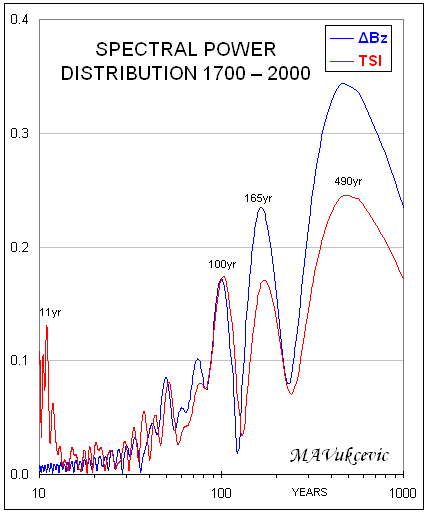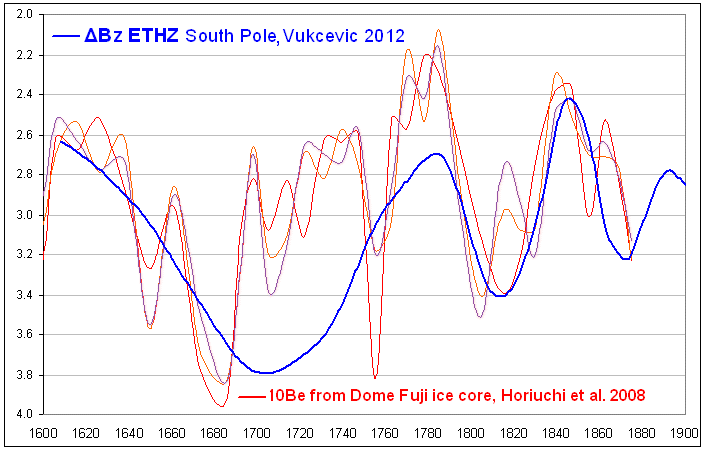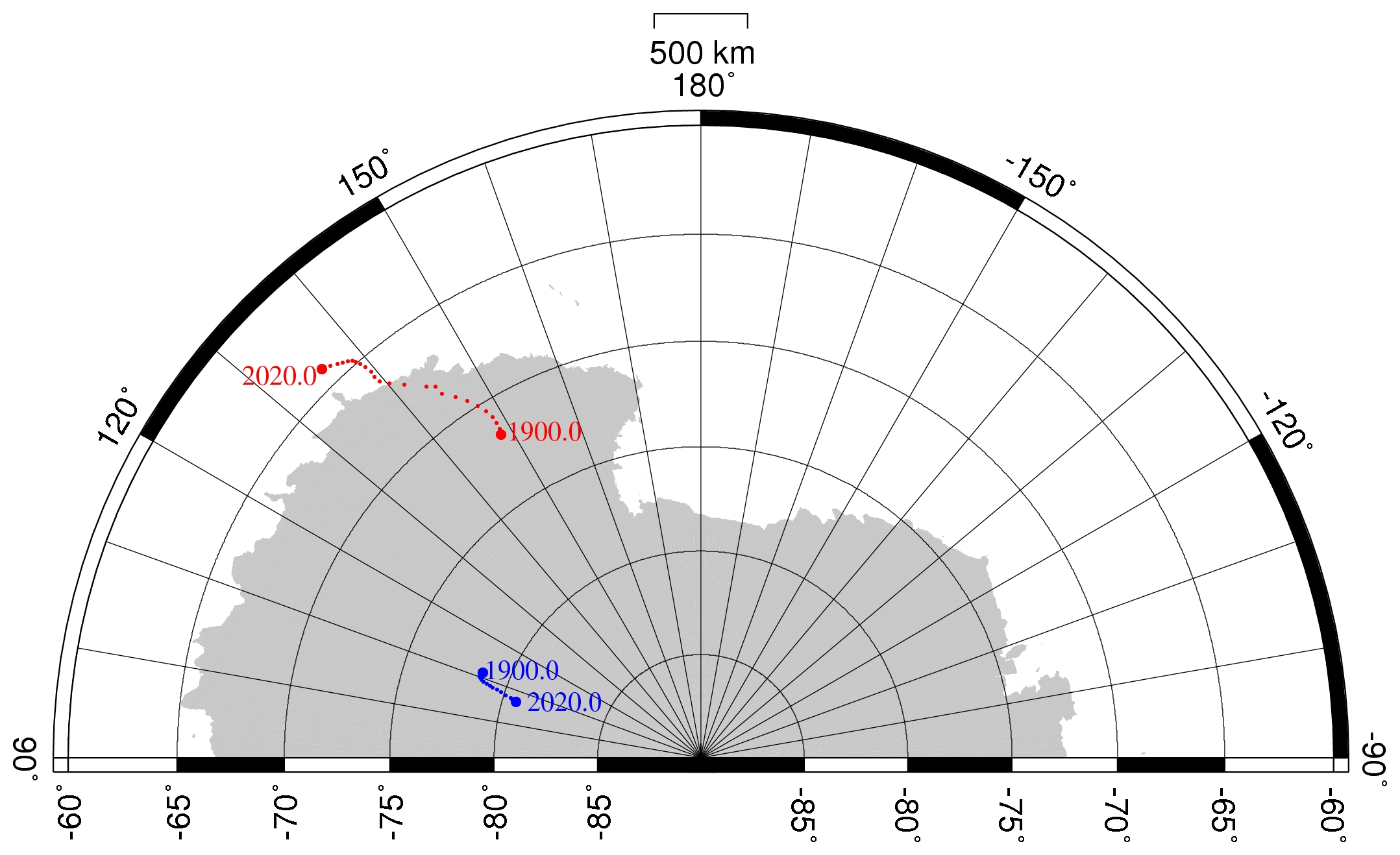Alternatively the most recent reconstruction of TSI by Dr. L. Svalgaard (Stanford University) offers TSI reconstruction with a near zero up-trend since 1700. Comparing the Svalgaard's TSI data with the Antarctic's MF (after re-trending to match the trend of the Svalgaard's reconstruction of y = 0.0007x) for period 1700 to date shows good correlation.
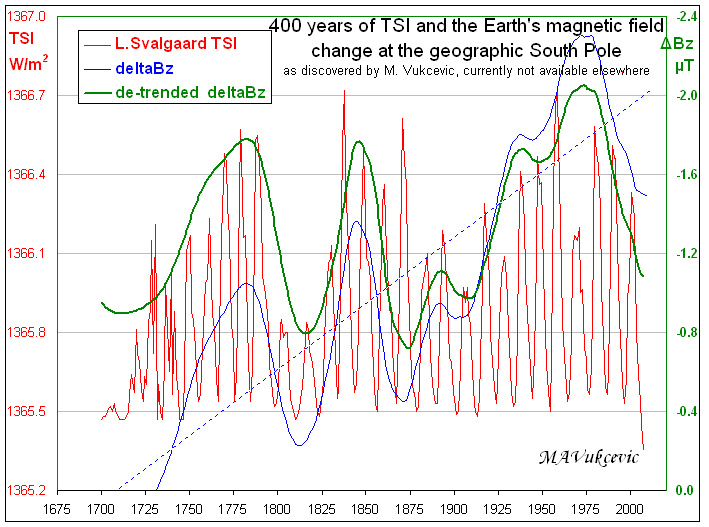
If the Svalgaard's TSI reproduction is eventually shown to be the correct one, graph would demonstrate that the composite Earth's magnetic field variability (solid blue curve) has a long term multi-millennial decaying component (dotted blue line) and a shorter term, multi-decadal variability .(green curve)
Strength of the sun-Earth link is demonstrated by the fact that changes in the Antarctic's MF intensity in the percentage terms are ~ 40 times greater than those in the corresponding TSI.
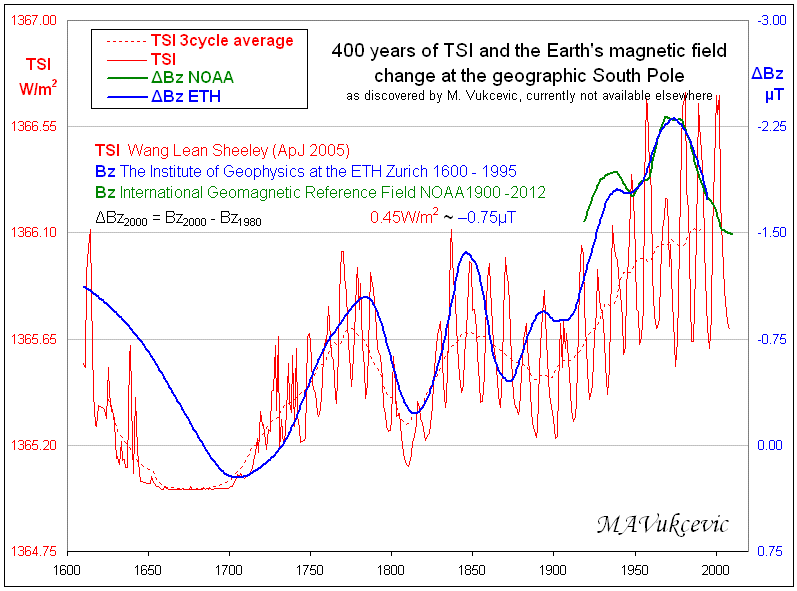
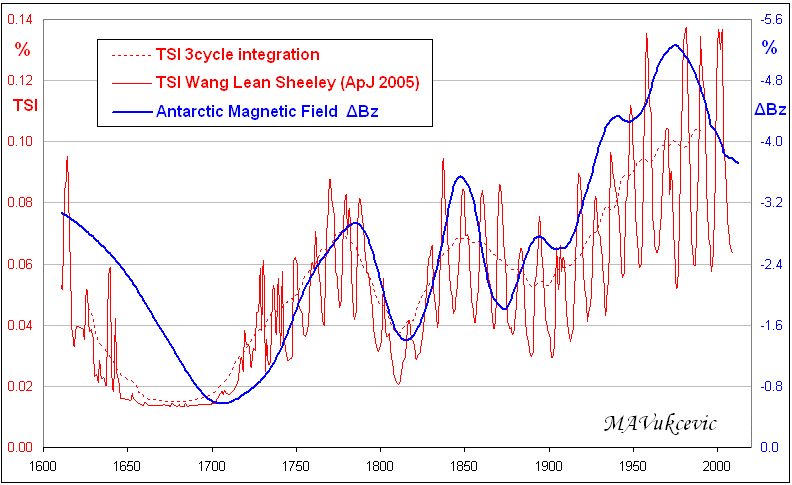
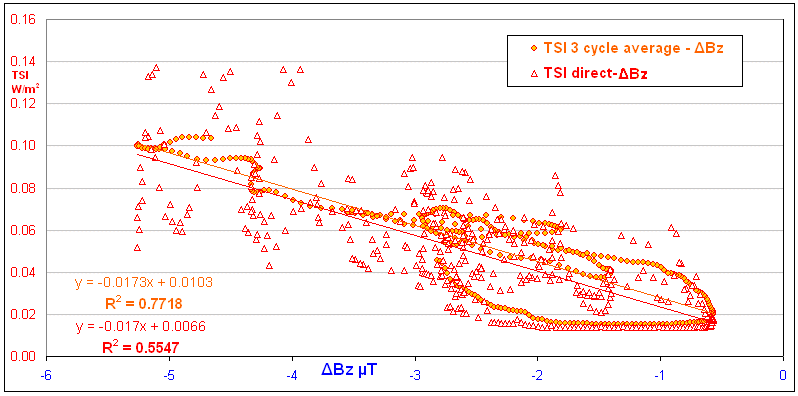
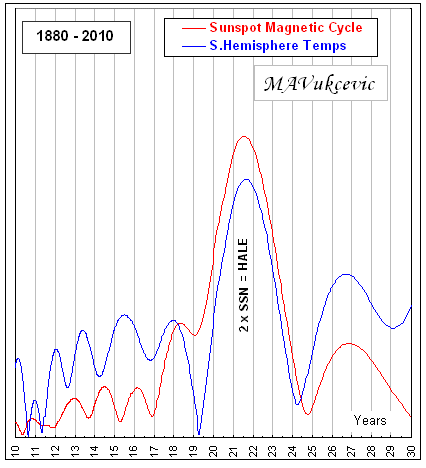 .
.